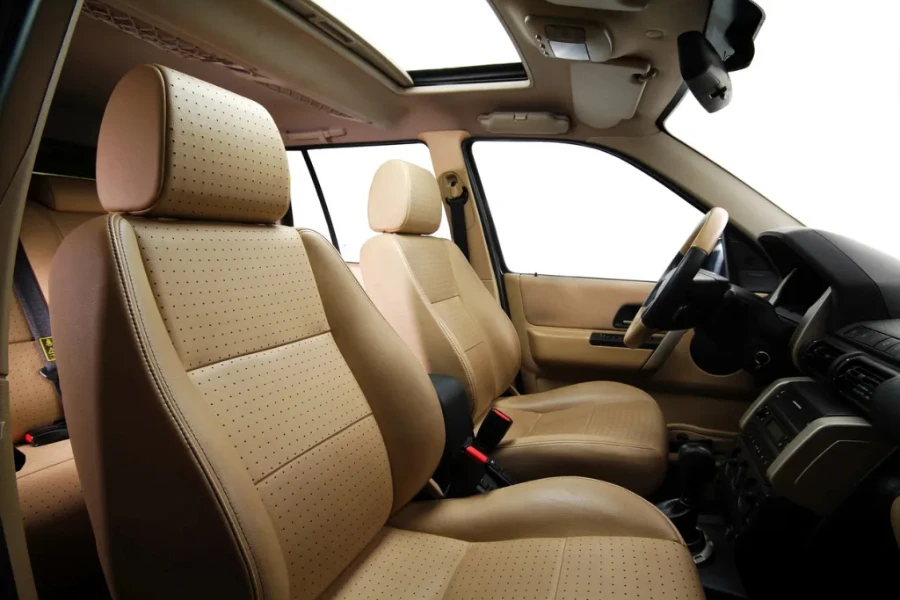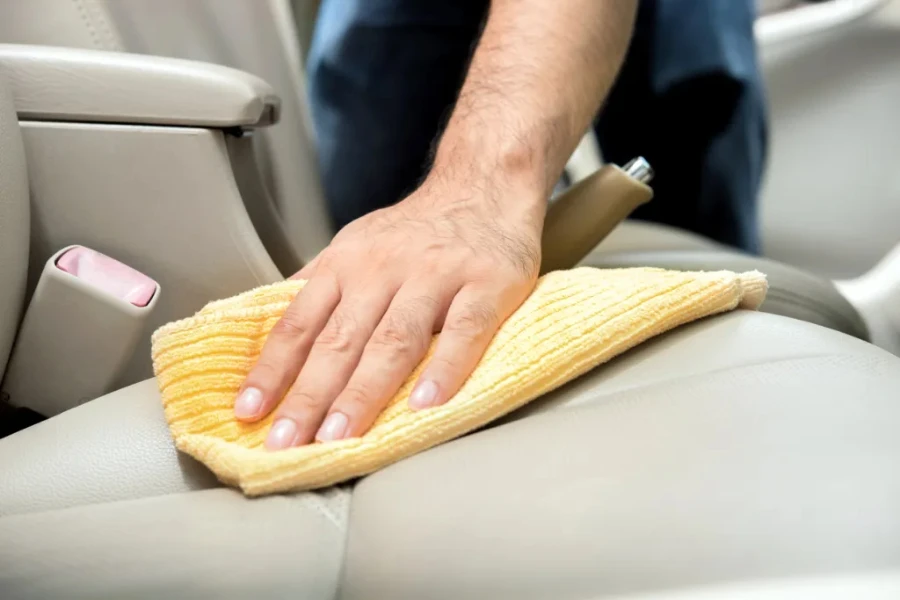Knowing how to clean car seats properly is essential for the appearance and comfort of one’s car. Car seats harbor bacteria and stains, which can cause health issues and reduce the quality of the seat’s fabric. Cleaning car seats also helps to ensure one’s car has a pleasant and fresh smell.
This article will explore the tools you need for the task and provide valuable tips on cleaning both leather and fabric car seats.
Table of Contents
Tools you need for cleaning your car seat
How to clean leather car seats
How to clean fabric car seats
Conclusion
Tools you need for cleaning your car seat
Car seats can be made from different materials, such as leather, fabric, and vinyl. It is, therefore, important to have different tools to clean each component effectively. Using various tools can also help when dealing with difficult stains and spills. The equipment you may require includes:
- Vacuum cleaner
- Mild detergent
- Small bristle cleaning brush
- Washable cloths
- Spray bottle
- Leather cleaner
- Container full of warm water
- Fabric cleaner
How to clean leather car seats

Cleaning a car seat involves several measures to ensure that you maintain the seat’s quality and prevent the growth of mold. Here are the steps you can follow:
Vacuum first
Vacuuming is a quick and easy way to remove loose dirt, food crumbs, and other debris from the car seat. It’s important to be gentle when using the vacuum on the seat’s surface and between the gaps, as leather can scratch easily if the vacuum is too forceful.
There are vacuum cleaner brands that come with different suction heads. You can use the broad head to clean a large area and a narrow head to vacuum between the seat’s crevices.
Apply the cleaner
After vacuuming, apply the leather upholstery cleaner to the client’s car seats. Ensure you carefully read the product’s instructions to apply it correctly and use the right amount. According to the manual’s specifications, add some cleaning product to warm water to form a solution. You can contain this solution in a spray bottle to control the amount you apply to the leather.
Cover any stain in the leather upholstery and use a washable cloth to add the solution. As the stain clears from the seat, you may notice that the leather gets a matte appearance. You can keep applying the solution and using the washable cloth to remove any persistent stains.
Dry and condition the seats
After cleaning the car seats and ensuring they are stain and spill-free, it is important to add some protective measures. Using a fresh cloth, wipe away excess water on the leather until it is slightly damp or completely dry. This step helps prevent potential water damage and ensures the leather stays in good condition.
For an added layer of protection, you can apply a leather conditioner. Leather conditioners help to restore leather’s natural oils that may have been reduced. The product leaves the material nourished and protected, and the car seats look new for longer periods.
When applying the leather conditioner, you can follow the instructions on the product packaging carefully. Use a soft cloth to apply the conditioner gently to the leather seats in a circular motion, covering all areas evenly. After allowing the conditioner to absorb into the leather, use a clean cloth to wipe away any excess product.
How to clean fabric car seats

Vacuum first
As with the cleaning of leather seats, begin by using a vacuum to remove any debris on the seats and in the crevices. Fabric car seats are easier to vacuum than leather seats because they’re more porous, and loose dirt is easier to suction up the vacuum. You can use the narrow attachment tool on the vacuum cleaner to access the tight spaces between and underneath the car seats.
Clean the seats
Once you have vacuumed up the loose debris on the car seats, refer to the instructions on your fabric cleaner. They act as a guide to help you determine the amount of warm water to mix in the cleaner and form a cleaning solution.
To apply the solution more precisely, consider using a spray bottle. Target any stained areas with the solution and use the bristle brush to work the cleaner into the stained spots of the seats. When cleaning fabric seats, it’s important to use a brush with soft bristles to avoid damaging the fabric.
A soft-bristled brush will help to loosen and remove dirt and stains while causing no harm to the material. After cleaning the car seats, allow the solution to sit and penetrate the fabric for a few minutes.
Many fabric cleaners include protective agents that can help guard your client’s car seats against future stains. While some dirt or spills may still penetrate the fabric, this extra layer of protection can help minimize damage and make future cleaning easier. You can also apply a protective fabric spray to help extend the car seat’s longevity and keep them looking new.
Dry the seats

After scrubbing the cleaning solution into the stained areas, take a clean cloth and carefully wipe away any remaining water or cleaner residue. You can use a gentle dabbing motion rather than harshly rubbing the fabric, as this can cause damage.
During cool and humid weather, drying car seats can become challenging. To avoid mold and mildew growth, use a fan to circulate dry air into the car, place a dehumidifier, and use a towel to dry damp regions.
Conclusion
By analyzing and following the cleaning tips in this article, you can clean fabric and leather car seats with the right equipment and procedure. These techniques will help you ensure a well-maintained interior while preventing car seat damage.
For more details on car cleaning products, visit Chovm.com.





 বাংলা
বাংলা Nederlands
Nederlands English
English Français
Français Deutsch
Deutsch हिन्दी
हिन्दी Bahasa Indonesia
Bahasa Indonesia Italiano
Italiano 日本語
日本語 한국어
한국어 Bahasa Melayu
Bahasa Melayu മലയാളം
മലയാളം پښتو
پښتو فارسی
فارسی Polski
Polski Português
Português Русский
Русский Español
Español Kiswahili
Kiswahili ไทย
ไทย Türkçe
Türkçe اردو
اردو Tiếng Việt
Tiếng Việt isiXhosa
isiXhosa Zulu
Zulu